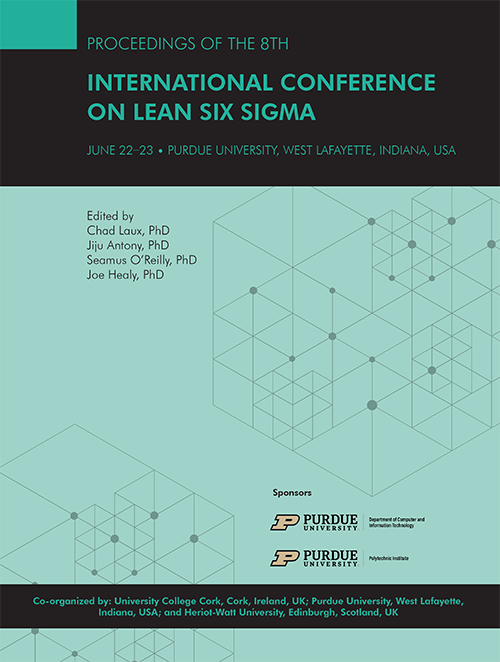DOI
10.5703/1288284317327
Abstract
Abstract
Purpose: This research explores Lean Six Sigma (LSS) limitations identified in previous studies and underpins the need to integrate Lean Six Sigma with Industry 4.0. Furthermore, this paper presents a use case for an opportunity offered by data-driven tools.
Method/Approach: Expert Interviews were conducted with senior Lean Six Sigma practitioners and academics in Europe. The data were analysed using qualitative content analysis and NVivo software.
Findings: This paper reveals limitations experienced by practitioners and their causal relationships. Additionally, new limitations have emerged, reinforcing the urgency to inject data-driven technologies into the traditional LSS Framework. Associated with this is the need for an LSS curriculum update.
Research limitations/implications: A new limitation found was the waterfall nature of the DMAIC framework. Therefore, an integration of Lean Six Sigma and Agile could be an emerging trend. Further research is planned by the primary author, i.e., designing an LSS4.0 framework including data-driven tools.
Originality/value: To the best of the authors’ knowledge, this is the first qualitative study to examine causal relationships among LSS limitations. The authors present a use case as an initial remedial strategy to alleviate Lean Six Sigma limitations.
Included in
Business Administration, Management, and Operations Commons, Business Analytics Commons, Business Intelligence Commons
LSS4.0 - Creating Opportunities from existing Limitations
Abstract
Purpose: This research explores Lean Six Sigma (LSS) limitations identified in previous studies and underpins the need to integrate Lean Six Sigma with Industry 4.0. Furthermore, this paper presents a use case for an opportunity offered by data-driven tools.
Method/Approach: Expert Interviews were conducted with senior Lean Six Sigma practitioners and academics in Europe. The data were analysed using qualitative content analysis and NVivo software.
Findings: This paper reveals limitations experienced by practitioners and their causal relationships. Additionally, new limitations have emerged, reinforcing the urgency to inject data-driven technologies into the traditional LSS Framework. Associated with this is the need for an LSS curriculum update.
Research limitations/implications: A new limitation found was the waterfall nature of the DMAIC framework. Therefore, an integration of Lean Six Sigma and Agile could be an emerging trend. Further research is planned by the primary author, i.e., designing an LSS4.0 framework including data-driven tools.
Originality/value: To the best of the authors’ knowledge, this is the first qualitative study to examine causal relationships among LSS limitations. The authors present a use case as an initial remedial strategy to alleviate Lean Six Sigma limitations.






